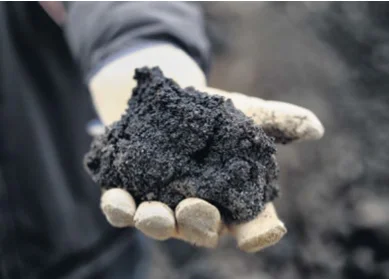Wake up, Canada: seize the opportunity for super-sized value-added projects
By Clement W. Bowman, Associate, Bowman Centre, Sarnia/Lambton Research Park, and Surindar Singh, Executive Director, Renewables & Emerging Technologies, Alberta Innovates: Energy and Environment Solutions
There was once a time when it made eminent sense to send all our oil and gas south. It no longer does. And it’s not just because of the XL pipeline. It’s because Canadians are losing billions of dollars a year by being too slow and complacent about finding new markets.
Consider the past decade. The Australians exported Liquefied Natural Gas (LNG) to China and Japan at parity with crude oil prices – around $16 per million cubic feet (MCF). Canada annually exported around three trillion cubic feet (TCF) of its natural gas to the United States only, often at prices below $3 per MCF. The lost revenues were around $13 per MCF. If one TCF per year had been sent to Asia, this would have generated an additional $13-billion each year. This would have easily paid for all the necessary pipelines and LNG terminals, as well as other massive infrastructure projects – and created high- paying jobs and immense wealth across Canada. Natural gas royalty revenues would have increased – and Alberta would not have had any deficits.
Crude oil and bitumen don’t yield the same returns as value-added petroleum products and diversifying exports could lead to a significant increase in revenues. ISTOCKPHOTO.COM
A similar situation exists with our bitumen exports. Compared to the refining of conventional crude oil, it takes a refiner around $15 per barrel more to refine bitumen to transportation fuels. When the differential between world crude oil price and bitumen price exceeds $15 per barrel, then it becomes more profitable for U.S. refiners to refine bitumen – but Canadians lose. For example, if the differential is $25 per barrel and one million barrels of bitumen are being refined in the United States, Canadians “lose” $10-million per day or $3.65-billion per year. Don Wood’s team at the Bowman Centre has estimated that a 100,000-barrel-per-day bitumen refinery in the Sarnia-Lambton region would cost $10-billion. If bitumen is diverted to this refinery and the differential is maintained at $15 per barrel, the capital cost of this refinery would pay for itself in less than three years. Lower differentials mean higher royalties – the Alberta government revenues would be increased significantly.
Canada needs to diversify its energy markets by building infrastructure both east and west of Alberta. And Canadian govern- ments have always done so – the TransCanada railways in the 19th century, the extensive oil and gas pipeline networks in the 20th century. Now, it’s time once more to make a strategic decision on building the energy infrastructure for the 21st century. This would pay for itself within a few years. For governments, it would mean more revenues; for industry, it would mean better market access and therefore greater profits; to Eastern Canada, it would mean better energy security; for all Canadians, it would mean more high-paying jobs and wealth generation.
The delegates at the May 2013 conference titled Bitumen - Adding Value: Canada’s National Opportunity concluded that failure to expand our market reach has resulted in “value destruction on a scale never witnessed before in this country.” Now is the time for national action to capture the true value of our energy resources. It’s in our own best interests.
BITUMEN UPGRADING PROJECT'S BUSINES CASER SEEN AS SOLID
Job creation, energy security and economic gains are some of the arguments for moving the Sarnia/Lambton bitumen upgrading project forward, says Don Wood, an associate of the Sarnia-based Bowman Centre and former Polysar vice-president.
Mr. Wood is part of a team of executives with petroleum industry experience who are currently looking for a corpo- rate champion (or champions) for the $10-billion oil sands bitumen upgrader and refinery in Chemical Valley.
“Canada stands to gain a significant increase in export revenue, and Alberta interests will have access to a new market for bitumen at more stable prices,” says Mr. Wood, adding that the local economy in the Sarnia/Lambton region will also see significant stimuli.
Part of the infrastructure is already in place, Mr. Wood explains, as the two pipelines that are currently coming into Sarnia can carry diluted bitumen and increasing their capacity is feasible. And if the new upgrader is built to produce gasoline, diesel and other value-added petroleum products, an acceptable return on investment can be achieved.
There are three existing refineries and two petrochemical plants as well as unused refinery and upgrader-suitable plants available, in addition to land, pipelines and other related infrastructure. Taking the existing assets into account, Mr. Wood estimates that infrastructure development would pay for itself within a few years.
“We have pipelines, local infrastructure and surplus skilled construction labour, all strategically located in the centre of the North American market, with access to international markets through the St. Lawrence Seaway,” says Mr. Wood, adding that additional benefits include produc- tion costs equivalent to those in the U.S. Gulf Coast and lower than in Europe and Asia, making the facility globally competitive.
“Ours is a welcoming community with over a century of experience hosting oil and gas industry projects,” Mr. Wood says. “Since we will use the latest technologies to eliminate or minimize emissions, and will consult with all local stakeholders, approvals to build are expected to be obtainable.
“The only losers would be the refineries abroad that would have to find their feedstock elsewhere,” says Mr. Wood, adding that the new 150,000-barrel-a-day upgrader and refinery in Sarnia would allow Canada to capture $2.5-billion annually in added value. If the bitumen is not processed locally, that opportunity would be lost, or sent south.
Visit the host publication or see more related articles below:











